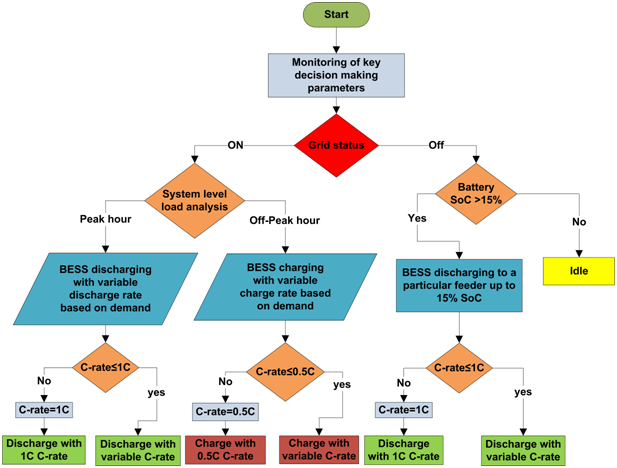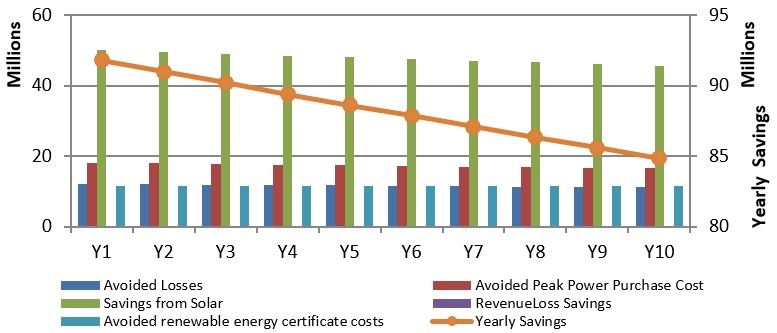Urban Microgrids – Plethora of Opportunity for City DISCOMs
Written by Ram Krishan, Er. Alekhya Datta, and Ashish Kumar Sharma
With increasing share of renewable energy (RE) in the power system, the resource adequacy planning exercise for power distribution utilities or Distribution Companies (DISCOMs) is bound to change. The role of balancing fleets such as Battery Energy Storage Systems (BESS) will become important and gain prominence with falling battery prices and more arbitrage opportunities in power markets. Flexibility and system reliability will be important attributes for any electricity distribution system operator and thus micro-grids will have a crucial role to play in both urban and rural set-ups. In an urban setting, micro-grids will help in synchronizing demand and supply and aid in improving quality & reliability of power supply. Such 'urban micro-grids' have gained relevance in congested Indian cities such as New Delhi, Kolkata, Mumbai where power distribution equipment augmentation becomes a tedious task due to underground cabling, space constraints and right of way challenges. Recent examples of distribution grid failures in major metropolitan cities have established the need for black-start support at the distribution-level. However, operational use cases at the distribution network-level can be unique and can change dynamically with time depending on demand & supply patterns, power purchase portfolio of the utility, customer-service obligations, etc. One such operational use case was found to exist for a Delhi based distribution utility wherein an urban micro-grid can be utilized to redeem energy arbitrage benefits, providing black-start support, meeting RPO targets and improving quality and reliability of power supply. A pre-feasibility study was carried out in this context which envisaged 8 MWp of solar PV potential along with 4 MWh of AC coupled BESS. The power evacuation for system integration at the utility power grid level was proposed through an 11 kV distribution line that emanates from a 66/11 kV distribution sub-station that serves the area. An operational control strategy for BESS was defined so as to maximize the benefits earned from the system in terms of peak power purchase cost saving while operating under Energy Arbitrage mode.
The study entailed detailed technical and economic feasibility of an urban micro-gird within the license area of an urban DISCOM serving electricity in a certain geography of the National Capital Territory (NCT) of Delhi. A commercial category consumer, in-particular a healthcare campus which is one of the largest temporary Covid-19 hospitals in India having capacity of 10,000 beds, (roughly the size of 22 football fields) was identified to carry out the feasibility assessment. The facility required the distribution company to set-up additional power distribution infrastructure in place. In a few days of its operation, the load increased to 100 times. The distribution equipment, including three additional 11 kV feeders, were set in place to supply power to the temporary health facility. The facility provides 75,000 m2 of area for large-scale solar PV and BESS installation with capacities mentioned above. The obvious reasons for selecting this particular site were the ample space available for installation of such large-scale micro-grids and adequate distribution network infrastructure to support the power flow through a micro-grid set up. The sizing of BESS was done so as to ensure that the power generated from the combined set-up was consumed locally within the distribution sub-station, thus preventing supply of power back to the upstream network, i.e., the 66 kV grid. The micro-grid was designed to supply power to the 14 feeders emanating from the 11 kV bus at the 66/11 kV sub-station owned by the utility. The BESS operational control algorithm was designed (as illustrated in figure 1) to operate the system as per peak and off-peak hours of the selected DISCOM and, in this regard, time-series loading data at the system level was assessed for last five financial years. The BESS was designed to charge during off-peak hours where cheaper power may be consumed and discharge during peak-loading durations when power purchase from expensive power plants can be curtailed. However, technical minimum of thermal power plants have to be taken into consideration in case large scale battery storage is deployed within the network of distribution utility since discharging of BESS with such a huge capacity may lead to significant reduction in power withdrawal from thermal power plants. Charging and discharging threshold along with rate of power flow for BESS operation was decided based on the assessment of monthly power purchase portfolio (shown in figure 2) and monthly system level load curve of the DISCOM. Furthermore, the charge/discharge threshold power level can also be made to vary dynamically on a daily basis. This can be performed while operating the system in real-time based on the forecast of the load pattern to identify the peak and off-peak times accurately. For optimal utilization of BESS, operation under off-grid mode during grid outages has also been explored by proposing black-start capability for a selected 11 kV feeder wherein micro-grid interconnection is being proposed. Based on load assessment, it was found that the BESS can provide 2-3 hours back-up to the loads connected on the feeder.

Figure 1: BESS operational control algorithm

Figure 2: Month wise peak and off-peak electricity price difference in INR/kWh
The stacking of plausible revenue streams resulted in a payback period of around 4-5 years (refer to the Figure 3 and Table 1) for the utility under study. These savings may not remain same for every utility and a lot depends on the consumer mix and other local conditions. The benefits from ensuring power supply during power outages were found to be the least since there is minimal incentive for distribution utilities to eliminate power outages completely. The prominent savings came from reducing early evening peak and energy arbitrage opportunities (charging in off-peak times and discharging in peak times). The benefit was found to be decreasing over the years due to linear degradation assumed for both BESS and Solar generation.
Table 1: Linear decrease in Non-discounted PBP with falling battery prices
| BESS Cost in $/kWh | 450 | 400 | 350 | 300 | 250 | 200 |
| Non Discounted PBP | 4.96 | 4.79 | 4.63 | 4.47 | 4.30 | 4.14 |

Figure 3: Plausible revenue streams over life of 10 years
Since BESS is a customized solution, cost-benefit assessment may differ from location to location and application to application. Distinct battery technologies offer different technological characteristics like power density, energy density, C-rates etc. A suitable technology has to be chosen based upon pain areas and saving opportunity of the distribution network. Revenue streams are also dependent on the price signals of the specific region where BESS is located.
This article edited by Ali Nabavi
For a downloadable copy of the March 2021 eNewsletter which includes this article, please visit the IEEE Smart Grid Resource Center.



To have the Bulletin delivered monthly to your inbox, join the IEEE Smart Grid Community.
Past Issues
To view archived articles, and issues, which deliver rich insight into the forces shaping the future of the smart grid. Older Bulletins (formerly eNewsletter) can be found here. To download full issues, visit the publications section of the IEEE Smart Grid Resource Center.




